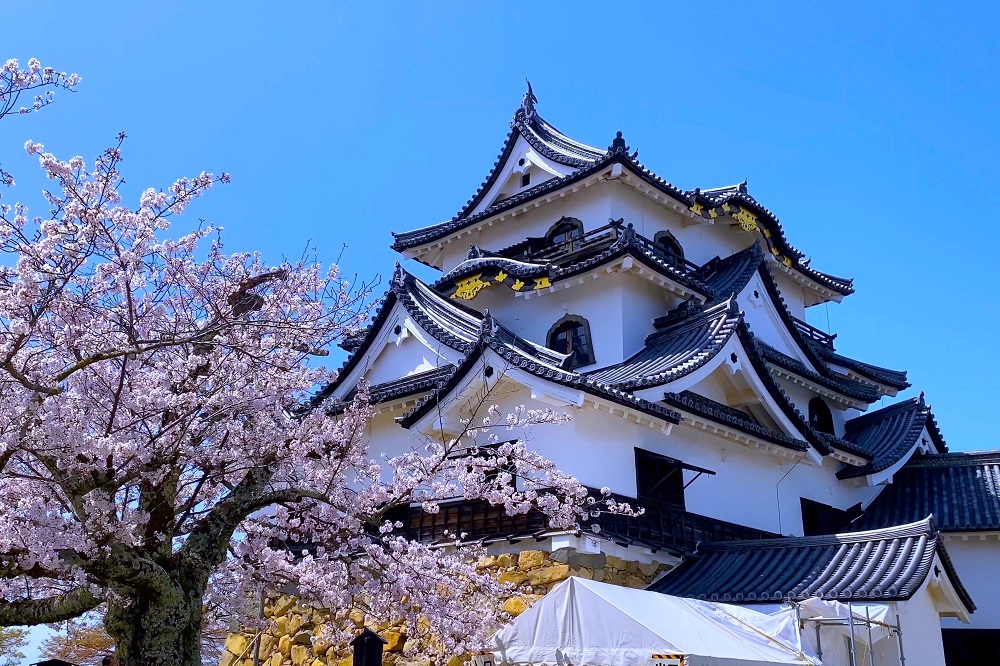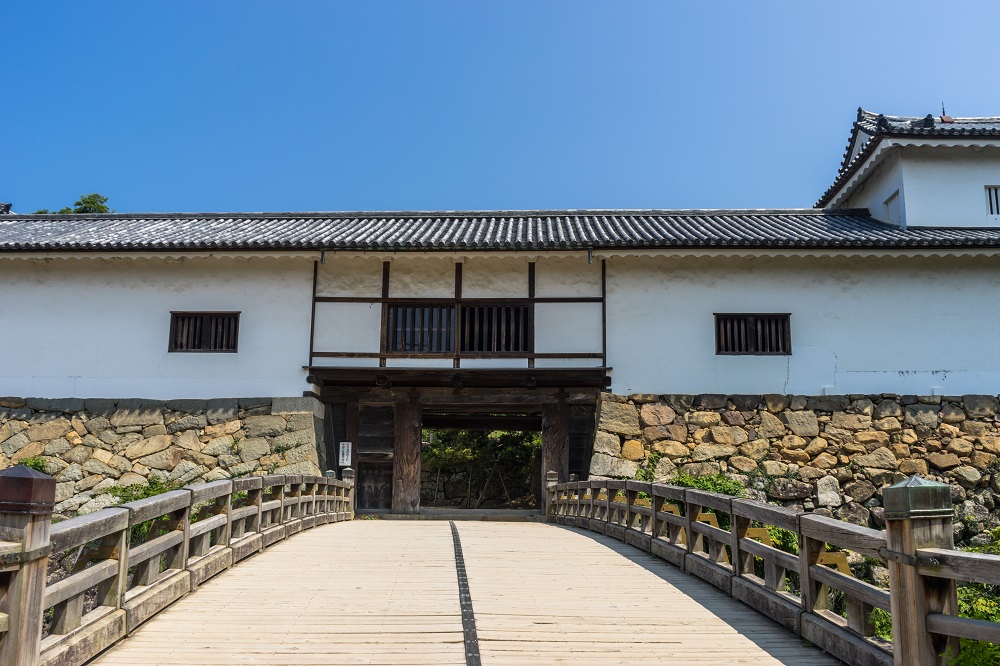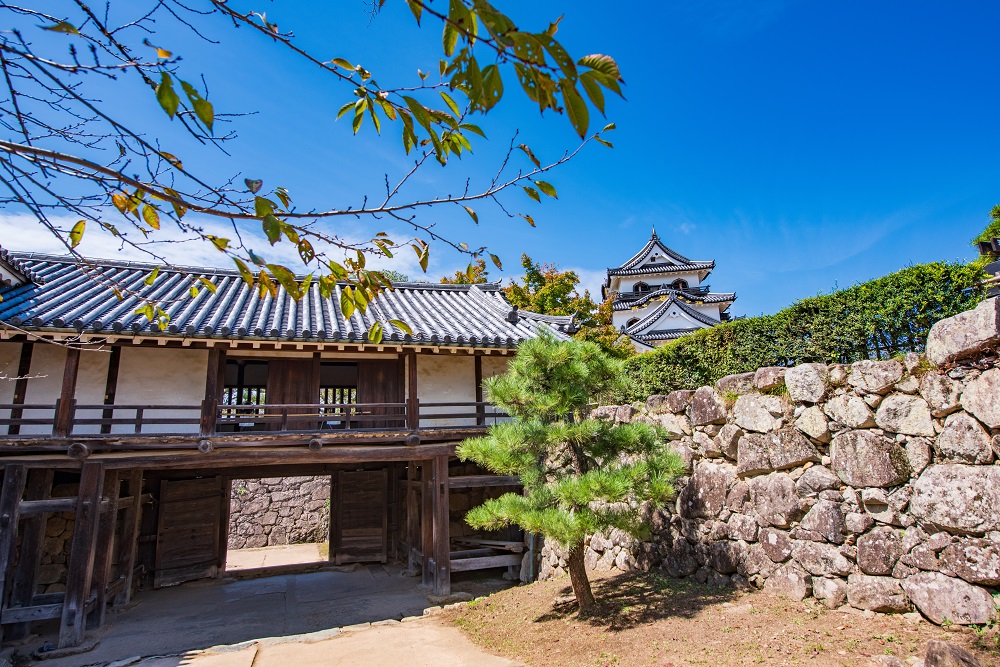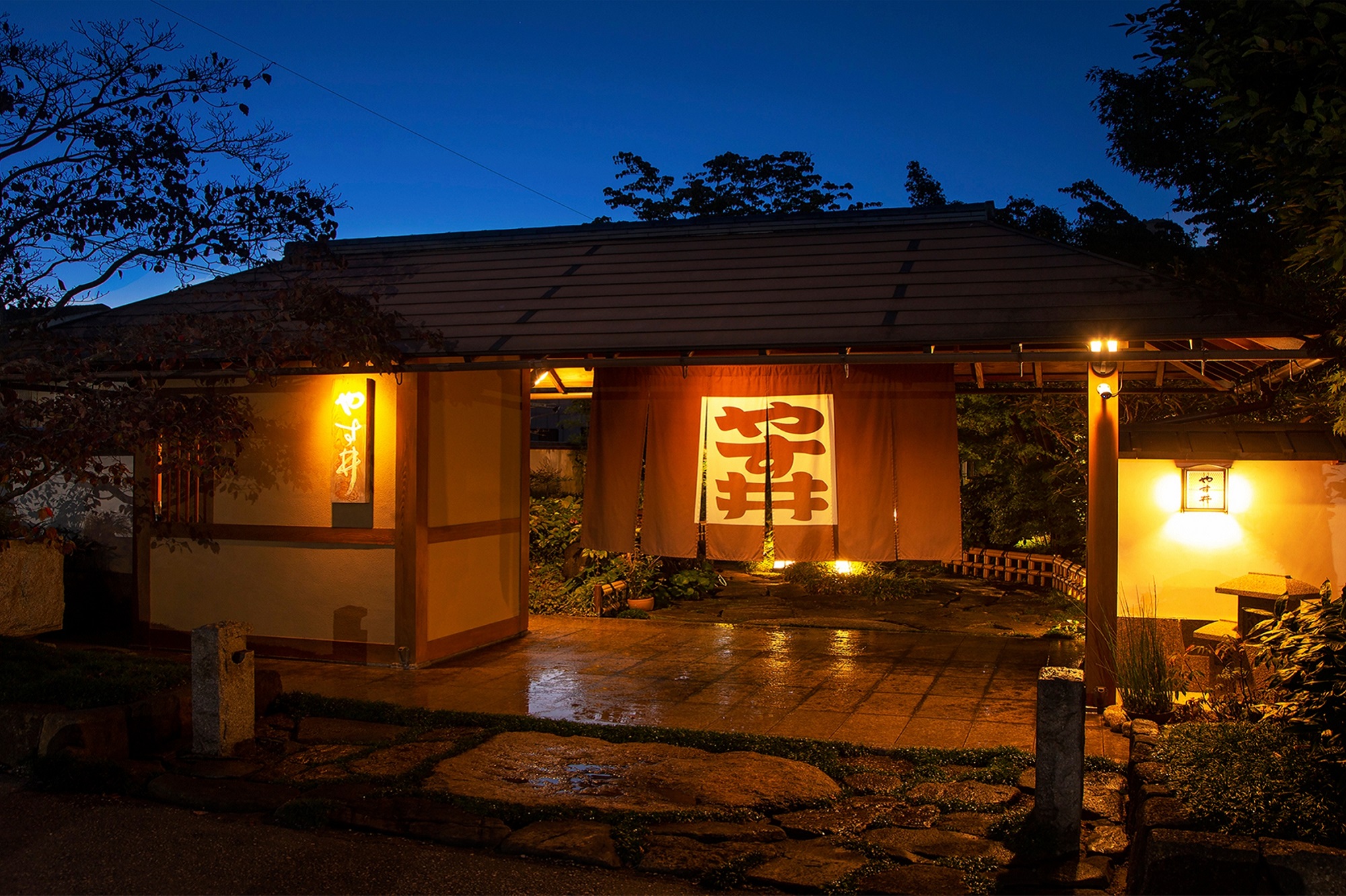Hikone Castle/彦根城(Shiga)
About Hikone Castle
Hikone Castle was the residence of the Ii family, feudal lords who held important positions in the Edo shogunate and supported the reign of the Tokugawa family. In 1604, by order of Tokugawa Ieyasu, construction of the castle began in an effort to supersede Sawayama Castle, which had previously served as a base for the Hikone area. Hikone Castle was completed around 1622. Along with Himeji Castle in Hyogo Prefecture, which is registered as a World Heritage Site, Hikone Castle is one of only five castles in Japan that has a keep designated as a national treasure.

The Hikone area has been a strategic location since ancient times due to its location at the crossroads of Tosendo Road (Nakasendo Road in the Edo Period) and Hokuriku Road (Hokkoku Road in the Edo Period). Up until the Warring States Period, Sawayama Castle served as the base castle, but in the Edo Period, construction of Hikone Castle began under the order of Tokugawa Ieyasu (1533–1616) as a strategy to wipe out Sawayama Castle. The construction of Hikone Castle was initially led by the Shogunate, and by 1607, the main parts of the castle were built in anticipation of warfare. After the Osaka Summer Campaign in 1615, the Ii family took the lead in building the Omote Goten ("front castle,") and developing the castle town, creating a city for samurai and townspeople alike. Hikone Castle also housed the largest stockpile of rice for the Tokugawa military forces, and the Ii family's troops served to fend off the surrounding area and the forces in the western part of the region.

Hikone Castle, now a symbol of Hikone City and beloved by many, was once on the brink of demolition during the Meiji Era (1868-1912). Amid this time of rapid modernization, castles around Japan began to be dismantled, and Hikone Castle was also scheduled for demolition. However, in 1878 (Meiji 11), when Emperor Meiji passed through Hikone on his way back from a tour of the Hokuriku region, he ordered the preservation of Hikone Castle; thus sparing it from demolition. There are various theories as to why the Emperor gave the order, including that Okuma Shigenobu (1838-1922), who was part of the Emperor's entourage, was saddened at the thought of Hikone Castle being lost, or that Kaneko, the Emperor's cousin and wife of the temple keeper of Fukuda Temple in Nagasawa, Omi-machi, where the Emperor stopped for respite, petitioned for Hikone Castle's preservation.

In 1952, Hikone Castle's keep, annexed turrets (Tsuke Yagura), and multi-story gate turrets (Tamon Tagura) were all designated national treasures. The main keep, which consists of three stories and a triple-layer roof, has a beautiful and varied appearance with an emphasis on the exterior. It is said to have been relocated from Otsu Castle, and not only is it magnificent to behold, but it also excels in its original function as a military strongpoint. In addition to the three national treasures of the keep, the annexed turrets, and the multi-story gate turrets, there are many other buildings of high historical value that have been designated as important cultural properties, such as the Nishinomaru three-storey turret, which once played a crucial part as the key to defense against enemy attacks from the west, Drum Gate Turret (Taiko-mon Yagura) and Tsuzuki-Yagura (linking turrets) that ominously guards the main entrance to the castle, and the Tenbin turret, an important post that prevented enemies from penetrating the honmaru (main castle.) Genkyu Rakurakuen Garden that girths the castle is a traditional Japanese garden designated as a national place of scenic beauty.
Getting there and around
Train
■From Tokyo
Take the Tokaido Shinkansen from JR Tokyo Station to Maibara Station, transfer to the JR Biwako Line, and get off at Hikone Station. 15 minutes walk from Hikone Station.
■From Nagoya
Take Tokaido Shinkansen from JR Nagoya Station to Maibara Station, transfer to JR Biwako Line, and get off at Hikone Station. 15 minutes walk from Hikone Station.
Bus
There is a bus that circles around sightseeing highlights near Hikone Castle. Day passes are also available.
Top Tip
Genkyūen and Rakurakuen Gardens/玄宮楽々園
Genkyu Rakurakuen Garden lies within Ninomaru Goten and its accompanying rear garden established by Ii Naoki, the fourth lord of the Hikone domain. In the past, Ninomaru Goten was known as "Tsuki Goten" and the garden "Tsukino-oniwa," but now the building portion is referred to as "Rakurakuen" and the garden portion "Genkyu Garden." The garden is designated as a national place of scenic beauty, and visitors can admire the charming trees and flowers that reveal a different side of themselves throughout the changing seasons, including the vivid colors of autumn.

Hoshodai/鳳翔台
This building is said to have been built to entertain guests of the Hikone clan, and was named "Hoshodai," which means "The place where the phoenix soars into the sky."
Located on a small mound overlooking Genkyu Rakurakuen Garden, Hoshodai offers a stunning view of the garden. Visitors can spend a moment in this serene setting while enjoying matcha green tea and traditional Japanese wagashi sweets.

Drum Gate Turret(Taiko-mon Yagura)/太鼓門櫓
Taiko-mon Yagura (Drum Gate Turret) is a dynamic gate that forms the front entrance to the honmaru (main castle.) It is said that the name "Taiko-mon" came from the taiko drums that were used for signaling within the castle. When the gate was dismantled and repaired, it was discovered that it had in fact been relocated from another castle, but it is not known which one. Taiko-mon Yagura is designated as a National Important Cultural Property of Japan.

Travel Advice and Tips
Hikone Castle's main keep is the ideal place for visitors to admire breathtaking scenery every season of the year. Springtime heralds the awakening of 1,100 cherry trees of eight different varieties, and at night one can enjoy the sight of the castle lit up in all its glory. On certain limited dates, the castle is open to the public for nighttime viewing, allowing visitors to view Hikone Castle in a way not normally possible. Castle enthusiasts simply cannot miss such an opportunity. Please check out Hikone Castle's official website for the latest information on this event.
Accommodations
Yasui/料亭旅館やす井(Shiga)
13-26 Yasukiyo-cho, Hikone, Shiga
Ryotei Ryokan YASUI, founded in 1872, is a long-established Japanese Restaurant Inn with a history dating back 150 years, located near Hikone Castle, a national treasure. Step onto the grounds and you'll find over 1300 m2 of well-maintained, beautifu....

